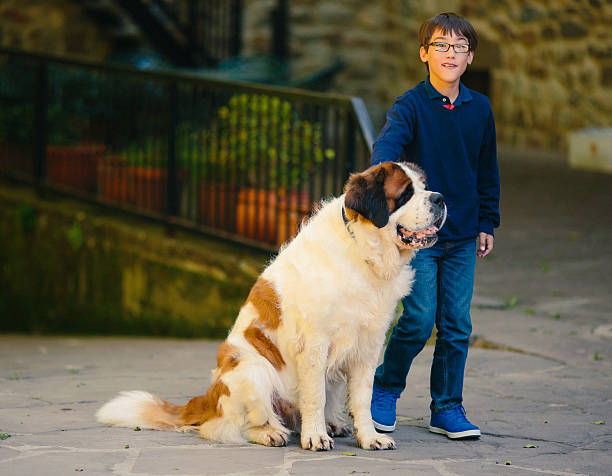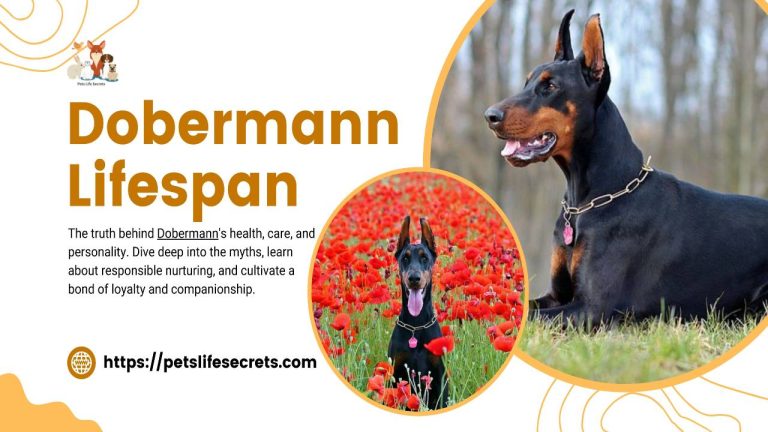Discover the charm of Saint Bernard dogs with our comprehensive guide. From choosing the perfect Saint Bernard puppy to training tips and common ailments, our experts provide valuable insights. Whether you’re a first-time owner or a seasoned enthusiast, explore the world of Saint Bernards and find your perfect companion today.
Table of Contents
HISTORY : Adopting a Saint Bernard Puppy
Contrary to popular belief, Saint Bernards have been known long before they gained popularity from the movie “Beethoven” in the 90s. They were recognized for their working capabilities in search and rescue missions and have also appeared in cartoons as a gentle giant. The breed has a rich history, initially being used as farmer dogs.
Saint Bernards were employed to pull carts, act as guardians, and alert their owners of any potential threats. These dogs were primarily found in farms near the Swiss Alps, specifically in the regions between Italy and Switzerland, where they protected travelers in a safe haven known as St.
Bernard Hospice. Saint Bernards belong to a group of dog breeds called Molossers, which includes other giant dogs like Mastiffs and Dogos. They were known by various names such as Hospice dog, Sacred dog, Alpen dog, Alpine Mastiff, and Barryhunds, named after the renowned rescue dog Barry. These dogs possessed an incredible sense of smell, making them invaluable in finding lost travelers and earning their reputation as search and rescue dogs.
During the 1800s, Saint Bernards began to be introduced to other countries. Prior to this, breeders experimented by crossing them with Newfoundlands to enhance certain traits. This crossbreeding resulted in the appearance of a long-haired variety, which proved to be unsuitable for the cold weather conditions in the Alps.
The long hair would accumulate ice, hindering the dogs’ ability to work effectively. In the early 1900s, the first Saint Bernard club was established, and many years later, the breed was officially recognized by the American Kennel Club.

Characteristics Of The Saint Bernard
Saint Bernard puppies are incredibly adorable, but it’s important to remember that they will grow into large dogs. Despite their size, they are exceptional with small children and possess a remarkable level of loyalty, patience, and love. While they have a guardian nature, they are not inherently aggressive unless they perceive a threat to their family, in which case they will rely on their intuition or wait for their trusted person to confirm the danger.
However, their imposing stature can be intimidating to others, and smaller dog breeds often react defensively towards them. Although Saint Bernards are generally non-aggressive, their bark alone can be misconstrued as a threat. Responsible ownership and proper socialization are crucial to ensure they remain well-behaved and can enjoy public spaces.
Male Saint Bernards can reach a height of 27 inches, while females average around 25 inches. They typically weigh between 120 to 200 pounds. Due to their large size, Saint Bernards have a slow growth rate and reach their full adult size between two to three years of age. When adopting from a shelter, it is advisable to choose a young puppy to avoid behavioral issues that may have resulted from previous owners.
However, older dogs should not be overlooked, as they deserve a second chance at a loving home. Proper training and early socialization are essential for these dogs, given their potential for immense strength. It is important to note that leaving small children unattended with any pet, especially a large breed like the Saint Bernard, is never recommended. Accidental knocks or falls from a large dog can unintentionally harm a small child. Always supervise interactions between children and dogs to ensure their safety.

Click Here: For More
Adopting a Saint Bernard Puppy
A Saint Bernard Puppy will surely melt your heart and everyone else’s at home. They are perfect for a family environment and get along well with other pets. These smart, loving, and placid dogs will follow you around the house and check on everyone to ensure their safety. However, there are some aspects of owning a Saint Bernard that potential adopters should consider before making a decision.
Grooming And Exercise
Saint Bernards have a thick, dense coat that requires regular grooming to keep it clean and healthy. They have a double coat with a soft undercoat and a longer, coarser outer coat. Brushing their coat at least once or twice a week is necessary to prevent matting and remove loose hair. During shedding seasons, which occur twice a year, more frequent brushing is needed to manage the heavy shedding. Additionally, their facial wrinkles should be cleaned regularly to prevent infection or irritation.
Regular exercise is essential for a Saint Bernard’s overall health and well-being. Despite their imposing size, they are not overly active dogs and have a moderate exercise requirement. Daily walks, play sessions, and mental stimulation through training or puzzle toys are sufficient to keep them physically and mentally stimulated.
It is important to avoid intense exercise during hot weather, as Saint Bernards are prone to heat exhaustion and heatstroke due to their thick coat and low tolerance for heat. Swimming can be an excellent form of exercise for them, as it is low impact and helps cool them down.
Health And Care
Saint Bernards are generally healthy dogs, but they are susceptible to certain health issues due to their large size. One of the most common concerns is hip and elbow dysplasia, which is a developmental condition affecting the joints. Regular vet check-ups, a balanced diet, and appropriate exercise can help manage these issues. Additionally, Saint Bernards are prone to bloat, a life-threatening condition where the stomach twists.
Feeding them smaller, frequent meals and avoiding exercise immediately after meals can reduce the risk of bloat. Other health concerns that can affect Saint Bernards include eye problems, heart conditions, and certain types of cancer. Responsible breeders conduct health screenings to minimize the risk of these genetic conditions.
Proper nutrition is crucial for the overall health of a Saint Bernard. A high-quality diet that is appropriate for their age, size, and activity level should be provided. It is important to prevent overfeeding, as excessive weight gain can put strain on their joints and exacerbate existing health issues. Consulting with a veterinarian to determine the best diet plan for your Saint Bernard is recommended.

Conclusion
Adopting a Saint Bernard puppy can bring immense joy and love to a family. Their gentle and loyal nature, combined with their striking appearance, make them a popular choice for many dog lovers. However, it is essential to consider their size, exercise needs, grooming requirements, and potential health issues before making the decision to adopt.
Responsible ownership, including proper training, socialization, and regular veterinary care, is crucial for ensuring a happy and healthy life for your Saint Bernard companion. With the right care and attention, your Saint Bernard can become a cherished member of your family for many years to come.
Frequently Asked Questions (FAQs):
- Are Saint Bernards good family pets?
Ans: Yes, Saint Bernards are known for being gentle and affectionate, making them excellent family pets. They are generally patient with children and get along well with other animals when properly socialized. - Do Saint Bernards drool a lot?
Ans: Yes, Saint Bernards are notorious for their drooling. They have loose jowls that tend to collect saliva, which can lead to drooling. If you’re considering a Saint Bernard, be prepared for some slobber! - How big do Saint Bernards get?
Ans: Saint Bernards are large dogs, with males typically weighing between 140 to 180 pounds (64 to 82 kg) and standing 28 to 30 inches (71 to 76 cm) tall at the shoulder. Females are slightly smaller, usually weighing between 120 to 140 pounds (54 to 64 kg) and standing 26 to 28 inches (66 to 71 cm) tall. - Are Saint Bernards good with children?
Ans: Yes, Saint Bernards are generally good with children. They have a patient and tolerant nature, but it’s important to supervise interactions between dogs and children to prevent accidental injuries, given their large size. - Do Saint Bernards require a lot of exercise?
Ans: While Saint Bernards are not highly active dogs, they still need regular exercise to stay healthy. Daily walks, playtime, and mental stimulation are sufficient to meet their exercise needs. However, excessive exercise should be avoided, especially in hot weather, as they are prone to heat-related issues. - How often do Saint Bernards shed?
Ans: Saint Bernards have a dense double coat and shed moderately throughout the year. They also go through two heavy shedding seasons during which more frequent brushing is necessary to manage the shedding and prevent matting. - What health issues are common in Saint Bernards?
Ans: Saint Bernards are prone to certain health issues, including hip and elbow dysplasia, bloat, eye problems, heart conditions, and certain types of cancer. Responsible breeders perform health screenings to minimize the risk of these genetic conditions.
8. Are Saint Bernards easy to train?
Ans: Saint Bernards are generally intelligent and eager to please, but they can be stubborn at times. Early socialization and consistent, positive reinforcement training methods work best with this breed. Patience, consistency, and firm but gentle guidance are important when training a Saint Bernard.
9. Do Saint Bernards require a lot of grooming?
Ans: Yes, Saint Bernards have a thick, dense coat that requires regular grooming. Weekly brushing helps prevent matting and keeps their coat healthy. During shedding seasons, more frequent brushing is needed to manage the heavy shedding. Cleaning their facial wrinkles is also important to prevent infection.
10. How long do Saint Bernards live?
Ans: The average lifespan of a Saint Bernard is around 8 to 10 years. Providing them with proper nutrition, regular veterinary care, exercise, and a loving environment can contribute to their overall health and longevity.
Remember, each Saint Bernard is an individual, and their temperament and needs can vary. It’s important to do thorough research and consult with reputable breeders or professionals to ensure that a Saint Bernard is the right fit for you and your lifestyle.




















